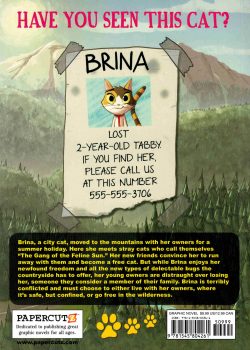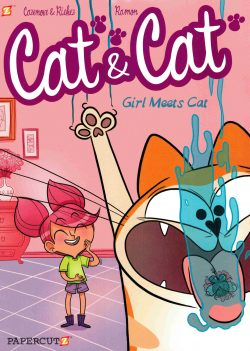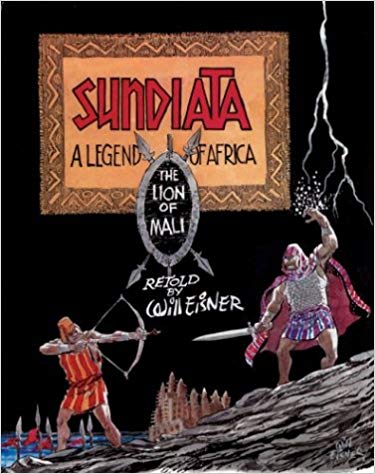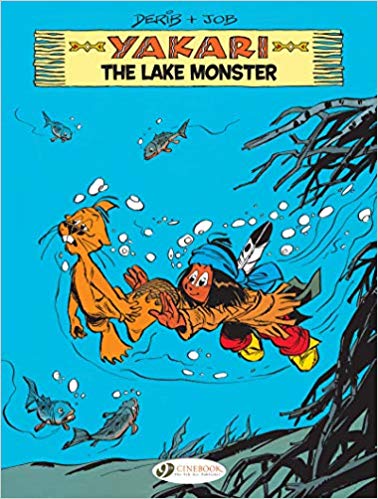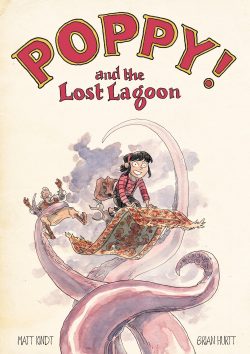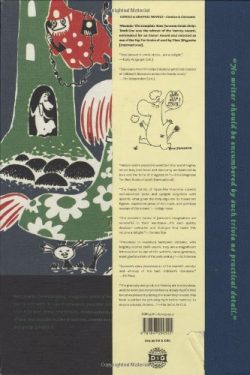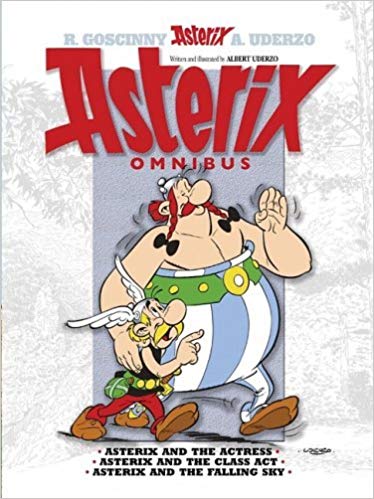
By Uderzo, translated by Anthea Bell & Derek Hockridge (Orion Childrens’ Books)
ISBNs: 978-0-75289-156-9 (HB Album) 978-1-44400-426-7 (PB Album)
A son of Italian immigrants, Alberto Aleandro Uderzo was born on April 25th 1927 in Fismes, on the Marn. Showing great artistic flair as a child reading Mickey Mouse in Le Pétit Parisien, the lad dreamed of becoming an aircraft mechanic one day.
After becoming a French citizen at age seven, Uderzo found employment at 13, apprenticed to the Paris Publishing Society where he learned design, typography, calligraphy and photo retouching. When WWII broke out, Albert spent time with farming relatives in Brittany and joined his father’s furniture-making business.
Brittany beguiled and fascinated Uderzo: when a location for Asterix’s idyllic village was being mooted, the region was the only choice.
During the post-war rebuilding of France, Uderzo returned to Paris and became a successful artist in the country’s revitalised and burgeoning comics industry. His first published work – a pastiche of Aesop’s Fables – appeared in Junior, and in 1945 he was introduced to industry giant Edmond-François Calvo (whose own comics masterpiece The Beast is Dead is still long overdue for a new edition and, if you follow current events, sorely needed as a timely warning shot in these frighteningly familiar-feeling times…).
Indefatigable Uderzo’s subsequent creations included indomitable eccentric Clopinard, Belloy, l’Invulnérable, Prince Rollin and Arys Buck. He illustrated Em-Ré-Vil’s novel Flamberge, worked in animation, and as a journalist and illustrator for France Dimanche. He created vertical comic strip Le Crime ne Paie pas for France-Soir and in 1950, even illustrated a few episodes of the franchised European version of Fawcett’s Captain Marvel Jr. for Bravo!
An inveterate traveller, the prodigy met Rene Goscinny in 1951. Soon fast friends, they decided to work together at the new Paris office of Belgian publishing giant World Press. Their first collaboration was in November of that year; a feature piece on savoir vivre (how to live right, or perhaps gracious living) for women’s weekly Bonnes Soirée, after which an avalanche of splendid strips and serials poured forth from their fevered brows.
Jehan Pistolet and Luc Junior were created for La Libre Junior before they devised a wry western with a native hero who eventually evolved into the delightfully infamous Oumpah-Pah. In 1955, with the formation of Édifrance/Édipresse, Uderzo drew Bill Blanchart for La Libre Junior, replaced Christian Godard on Benjamin et Benjamine and, in 1957, added Charlier’s Clairette to his bulging portfolio.
The following year he made his debut in Le Journal de Tintin, as Oumpah-Pah finally found a permanent home and rapturous audience. In his quieter moments, Uderzo also drew Poussin et Poussif, La Famille Moutonet and La Famille Cokalane.
When Pilote launched in 1959, Uderzo was a major creative force for the new magazine, collaborating with Charlier onTanguy et Laverdure whilst producing with Goscinny a little something called Astérix le gaulois…
Despite Asterix being a massive hit from the start, Uderzo continued working on Les Aventures de Tanguy et Laverdure, but once the first Roman romp was compiled and collected as hit album Ast̩rix le gaulois in 1961, it became clear that the series would demand most of his time Рespecially as the incredible Goscinny seemed to never require rest or run out of ideas.
By 1967 the strip occupied all Uderzo’s time and attention, so in 1974 the partners formed Idéfix Studios to fully exploit their inimitable creation. When Goscinny passed away three years later, Uderzo had to be convinced to continue the adventures as writer and artist, producing a further ten volumes until 2010 when he retired.
After nearly 15 years as a weekly comic strip subsequently collected into albums, in 1974 the 21st tale (Asterix and Caesar’s Gift) was the first to be published as a complete original book before being serialised. Thereafter, each new release was a long-anticipated, eagerly-awaited treat for the strip’s millions of fans…
According to UNESCO’s Index Translationum, Uderzo is the 10th most-often translated French-language author in the world and the third most-translated French language comics author – right after his old mate René Goscinny and grand master Hergé.
Global sales will soon top 380 million copies of the 38 canonical Asterix books, making his joint creators – and their successors Jean-Yves Ferri and Didier Conrad – France’s best-selling international authors.
One of the most popular comics features on Earth, the collected chronicles of Asterix the Gaul have been translated into more than 100 languages since his debut, with a wealth of animated and live-action movies, TV series, assorted games, toys, merchandise and even a theme park outside Paris (Parc Astérix, naturellement)…
Like all the best stories the premise works on more than one level: read it as an action-packed comedic saga of sneaky and bullying baddies coming a cropper if you want or as a punfully sly and witty satire for older, wiser heads. We Brits are further blessed by the brilliantly light touch of master translators Anthea Bell & Derek Hockridge who played no small part in making the indomitable little Gaul so very palatable to English tongues.
More than half of the canon is set on Uderzo’s beloved Brittany coast, where – circa 50 B.C. – a small village of cantankerous, proudly defiant warriors and their families resist every effort of the mighty Roman Empire to complete the conquest of Gaul. The land has been divided by the conquerors into compliant provinces Celtica, Aquitania and Amorica, but the very tip of the last cited just refuses to be pacified…
The remaining epics occur in various locales throughout the Ancient World, with the Garrulous Gallic Gentlemen visiting every fantastic land and corner of the myriad civilisations that proliferated in that fabled era…
When the heroes are playing at home, the Romans, unable to defeat the last bastion of Gallic insouciance, futilely resort to a policy of absolute containment. Thus, the little seaside hamlet is permanently hemmed in by the heavily fortified garrisons of Laudanum, Compendium, Totorum and Aquarium.
The Gauls couldn’t care less: daily defying the world’s greatest military machine simply by going about their everyday affairs, protected by the magic potion of resident druid Getafix and the shrewd wits of the diminutive dynamo and his simplistic, supercharged best friend Obelix…
Firmly established as a global brand and premium French export by the mid-1960s, Asterix continued to grow in quality as Goscinny & Uderzo toiled ever onward, crafting further fabulous sagas; building a stunning legacy of graphic excellence and storytelling gold. Moreover, following the civil unrest and nigh-revolution in French society following the Paris riots of 1968, the tales took on an increasingly acerbic tang of trenchant satire and pithy socio-political commentary…
By the time of the first tale in this omnibus edition was released Goscinny had been gone for almost a quarter of a century and Uderzo had found his own authorial voice, whilst keeping the immortal characters rock steady in their natures…
Uderzo’s seventh session as sole auteur was Astèrix et Latraviata: released in 2001 as the 30th volume of the ever-unfolding saga. The English language version was released that same year as Asterix and the Actress.
The revelatory epic opens with romance in the air as Obelix and his lifelong pal return to the village, laden down with boars and more battered keepsakes of the ongoing contretemps with the woefully-outmatched Romans.
They amiably amble into a huge surprise party. The heroes coincidentally share the same birthday and their garrulous Gaulish friends have arranged the event to commemorate the occasion. Even their respective mothers have come down for a visit from fashionable regional capital Condatum…
Soon a feast is in full swing but after handing over their spectacular gifts (culled from the parents’ fashionable souvenir shop) – a fabulous jewelled sword for Asterix and an equally splendid Roman helmet for Obelix to add to his huge collection – the mothers begin a battle of their own with their sons.
Fed up with waiting for their hardworking husbands to arrive from the Big City, the impatient matrons start in on the birthday boys with lectures about settling down and providing some grandchildren…
Overruling Asterix and Obelix’s complaints, the insistent Sarsaparilla and Vanilla conduct acutely embarrassing interviews with the village’s contingent of eligible females and their potential mothers-in-law. They even organise a formal dance to show off their sons’ matrimonial potential, but the matchmaking is a succession of fiascos since the oafish louts just don’t want to play ball…
Fathers Astronomix and Obeliscoidix are now long overdue. Unknown to all, they have been arrested by Prefect Bogus Genius. The wily official has a problem which needs some clever and extremely delicate handling…
Already in custody is dipsomaniac former legionary Tremensdelirious (from Asterix and Caesar’s Gift), who sold the aforementioned sword and helmet to the Gaulish souvenir traders. Sadly, the items’ true owner is Caesar’s greatest enemy Pompey and incontrovertible proof positive that the usurping former tribune is back in Europe. The items must be quietly recovered before Rome realises…
Well aware of the ferocious reputation of the sons of his Gaulish captives, the Prefect enacts a devious scheme suggested by his spies. Mighty Obelix turns to jelly whenever he sees the beautiful Panacea (another village émigré now living in Condatum with her husband Tragicomix – as first seen in Asterix the Legionary) so the devilish plotter has hired the Empire’s greatest actress Latraviata to impersonate her and steal back the incriminating evidence…
As the despondent dads tire of waiting for rescue by their doughty boys and strike a deal with their cellmate Tremensdelirious, Decurion Fastandfurius is pretending to be a merchant escorting “Panacea†back to her home village. Apparently, the poor thing has a very selective case of amnesia…
In that certain Gaulish village on the coast of Armorica the actress is readily accepted with only Getafix in the least suspicious. Soon, her fawning attention to besotted Obelix wins her the helmet but Asterix is not so easily wooed. That changes when a spat with his now-jealous bosom buddy results in a mighty blow to the head which deprives him of his usually superior wits…
If not for overprotective mother Vanilla the plot would have succeeded then and there, but she stops the ingénue making off with the sword and calls in Getafix to cure her addled son. Unfortunately, the magic potion has a bizarre effect on the little zombie and Asterix goes wild, acting like an animal and scrapping with Obelix before hurtling out to sea like a torpedo…
He regains his senses on a rock in the middle of nowhere just as a massive storm erupts about him and only survives due to the intervention of old frenemies The Pirates and a particularly accommodating dolphin…
In the meantime, Latraviata and Fastandfurius have secretly secured the sword and started back for Condatum. Still unaware of their true nature, freshly reconciled Asterix and Obelix – who are heading in the same direction to find out what has delayed their dads – cadge a lift on the infiltrators’ cart.
Elsewhere, other agents are coming into play. A certain spy has already informed Caesar of trouble brewing and the real Panacea, having seen Astronomix and Obeliscoidix’s wrecked shop, has rushed off with Tragicomix to warn the village…
As our heroes head for the city, they are baffled to see Romans so busy fighting each other that they don’t even notice their usual nemeses, and everything comes to a startling head when Panacea apparently meets herself on the road…
After explanations, apologies and a surprising change of heart on behalf of one of the conspirators, Asterix and Obelix dash on to Condatum to rescue their fathers, only to stride straight into a major melee as Caesar and Pompey’s forces furiously clash…
Of course, it all works out in the end and cartoon dog-lovers everywhere will rejoice in the last moment arrival of the missing wonder mutt Dogmatix…and the introduction of his new “wife†and family. Apparently, some heroes cansuccessfully combine romance and duty…
Packed with outrageous action, good-natured joshing, cleverly applied raucous family humour, bombastic spectacle and a torrent of punishing puns to astound and bemuse youngsters of all ages, this rollicking affirmation of life’s eternal verities further confirmed Uderzo’s reputation as a storyteller whilst his stunning illustrative ability affords glimpses of sheer magic to lovers of cartoon art.
Diminutive, doughty daredevil Asterix is one of the Ninth Art’s greatest achievements, and by the mid-1960s had become a global brand and premium French export. He continued to grow in quality as Goscinny & Uderzo toiled ever onward, crafting further fabulous sagas; building a stunning legacy of graphic excellence and storytelling gold. As such prominent and ever-ascending stars, their presence was often requested in other places, as varied as fashion magazine Elle, global icon National Geographic and even a part of Paris’ 1992 Olympic Bid…
In 2013 new yarn Asterix and the Picts opened a fresh chapter in the annals as Jean-Yves Ferri & Didier Conrad began a much-anticipated continuation of the franchise. Before that, however, Uderzo was convinced to gather and – in many instances – artistically re-master some of the historical oddments and pictorial asides which had incrementally accrued over the glory-filled decades: features by the perfect partners which just didn’t fit into major album arcs, tales done for Specials, guest publications and commercial projects starring the indomitable Gaul. To cap off the new-old package Albert crafted an all-original vignette from that halcyon world of immortal heroes…
This intriguing compilation first appeared in France as Ast̩rix et la rentr̩e gauloise in 1993 Рand a decade later in English Рgathering those long-forgotten side-pieces and spin-off material starring the Gallant Gauls and frequently their minor-celebrity creators too.
Following an expansive and explanatory ‘French Publisher’s Note’ – and the traditional background maps and cast list – a press conference from Chief Vitalstatistix leads directly into the eponymous ‘Asterix and the Class Act’ (originally seen in Pilote #363 October 6th, 1966) wherein the first day of school finds the little legend and his big buddy sadly miscast as truant inspectors and kid catchers for headmaster Getafix…
Each little gem is preceded by an introductory explanatory piece, and following the hard facts comes ‘The Birth of Asterix’. Taken from October 1994’s Le Journal exceptionnel d’Astérix, the tale is set ‘In the Year 35 BC (Before Caesar)’ and finds a certain village in high dudgeon as two young women go into labour. Their distraught husbands soon find a way to distract themselves – and everybody else – with a mass punch-up that quickly becomes the hamlet’s preferred means of airing issues and passing the time…
‘In 50 BC’ comes from May 1977 and re-presents newspaper-style strips produced at the request of an American publisher hoping to break the European stalwarts in the USA. The endeavour inevitably stalled but the panels – introducing and reprising the unique world of the Gallic goliaths – wound up being published in National Geographic.
Apparently Uderzo loves chickens and, especially for the original August 2003 release, he concocted the tale of ‘Chanticleerix the Gaulish Cockerel’, detailing the struggle between the village’s ruling rooster and a marauding Roman Eagle. It sounds pretty one-sided, but faithful mutt Dogmatix knows where the magic portion is kept…
Pilote #424 (7th December 1967) was full of Seasonal festive fun so ‘For Gaul Lang Syne’ saw Obelix attempting to use druidic mistletoe to snaffle a kiss from beautiful Panacea. He soon comes to regret the notion…
‘Mini, Midi, Maxi’ was produced for fashion magazine Elle (#1337 2nd August 1971) but the discussion of ancient Gaulish couture soon devolves into the kind of scraps you’d expect, after which ‘Asterix As You Have Never Seen Him Before…’ (Pilote #527, 11th December 1969) displays Uderzo’s practised visual versatility as our heroes are realised in various popular art styles from gritty superhero to Flash Gordon, a Charles Schulz pastiche and even as an underground psychedelic trip…
Approached to contribute a strip to Paris’ bid, the partners produced ‘The Lutetia Olympics’ which was later published in Jours de France #1660 (25th October 1986) and depicts how Caesar’s attempts to scotch a similar attempt to hold the great games in Gaul fails because of a certain doughty duo, whilst ‘Springtime in Gaul’ (from Pilote #334, 17th March 1966) is an early all-Albert affair wherein our heroes help the mystic herald of changing seasons give pernicious winter the boot…
‘The Mascot’ originated in first digest-sized Super Pocket Pilote (#1, 13th June 1968), revealing how the constantly-thrashed Romans decide to acquire a lucky animal totem, but chose the wrong-est dog in the world to confiscate, after which ‘Latinomania’ (crafted in March 1973 and re-mastered for the first Astérix et la rentrée gauloise in 1993) takes a sly poke at the fragile mutability of language.
‘The Authors Take the Stage’ describes how usually-invisible creators became characters in their own work and ‘The Obelix Family Tree’ collects a continuing panel strip which began in Pilote #172 (7th February 1963) and ran until #186, wherein Mssrs. Goscinny & Uderzo encounter a modern day Gaulish giant and track his ancestors back through history.
Everything ends with ‘How Do They Think It All Up?’ (Pilote #157, 25th October 1962) as two cartoonists in a café experience ‘The Birth of an Idea’…
Adding extra lustre to an already stellar canon, these quirky sidebars and secret views thankfully collect just a few more precious gags and wry capers to augment if not complete the long and glorious career of two of France’s greatest heroes – both the real ones and their fictive masterpieces. Not to be missed…
Uderzo’s controversial eighth solo outing (originally entitled Le Ciel lui tombe sur la tête) was released in 2005 as the 31st volume of the ever-unfolding saga. The English language edition was released that same year as Asterix and the Falling Sky. Apart from unlikely thematic content and quicker pacing, the critics’ main problem seemed to stem from a sleeker, slicker, less busy style of illustration – almost a classical animation look – but that’s actually the point of the tale. The entire book is a self-admitted tribute to the Walt Disney cartoons of the artist’s formative years, as well as a sneakily good-natured critique of modern comics as then typified by American superheroes and Japanese manga…
The contentious iconoclasm opens with the doughty little Gaul and affable pal Obelix in the midst of a relaxing boar hunt when they notice that their quarry has frozen into petrified solidity.
Perplexed, they head back through the eerily silent forest to the village, only to discover that all their friends have been similarly stupefied and rendered rigidly inert…
Somehow faithful canine companion Dogmatix and aged Getafix have some life in them, but only when Obelix admits to giving the pooch the occasional tipple of Magic Potion does Asterix deduce that it’s because they all have the potent brew currently flowing though their systems…
With one mystery solved they debate how to cure everybody else and all the woodland creatures – especially the wild boars – but are soon distracted by the arrival of an immense golden sphere floating above and eclipsing the village…
Out of if drifts a strange but friendly creature who introduces himself as “Toon†from the distant star Tadsilweny (it’s an anagram, but don’t expect any help from me), accompanied by a mightily powered being in a tight-fitting blue-and-red costume with a cape. Toon calls him Superclone…
The mighty minion casually insults Obelix and promptly learns that he’s not completely invulnerable, but otherwise the visitors are generally benevolent. The paralysis plague is an accidental effect of Toon’s vessel, but a quick adjustment by the strange visitor soon brings the surroundings back to frenetic life.
That’s when the trouble really starts as the villagers – and especially Chief Vitalstatistix – see the giant globe floating overhead as a portent that at long last the sky is falling…
After another good-spirited, strenuously physical debate, things calm down and Toon explains he’s come from the Galactic Council to confiscate an earthly super-weapon and prevent it falling into the hands of belligerent alien conquerors the Nagmas (that’s another anagram) and there’s nothing the baffled Earthlings can do about it…
At the Roman camp of Compendium Centurion Polyanthus is especially baffled and quite angry. His men have already had a painful encounter with Superclone but the commander refuses to believe their wild stories about floating balls and strangers even weirder than the Gauls, but he’s soon forced to change his mind when a gigantic metal totem pole lands in a blaze of flame right in his courtyard.
Out of it flies an incredible, bizarre, insectoid, oriental-seeming warrior demanding the whereabouts of a powerful wonder-weapon. Extremely cowed and slightly charred, Polyanthus tells him about the Magic Potion the Gauls always use to make his life miserable…
The Nagma immediately hurries off and encounters Obelix, but the rotund terrestrial is immune to all the invader’s armaments and martial arts attacks. He responds by demonstrating with devastating efficacy how Gauls fight…
After zapping Dogmatix, the Nagma retreats. When Obelix dashes back to the village it follows. No sooner has Toon cured the wonder mutt than the colossal Nagma robot-ship arrives, forcing the friendly alien to fly off and intercept it in his golden globe…
The Nagma tries to trade high-tech ordnance for the Gauls’ “secret weapon†but Asterix is having none of it, instead treating the invader to a dose of potion-infused punishment.
Stalemated, the Nagma then unleashes an army of automatons dubbed Cyberats and Toon responds by deploying a legion of Superclones. The battle is short and pointless and a truce finds both visitors deciding to share the weapon…
Vitalstatistix is outraged but Getafix is surprisingly sanguine, opting to let both Toon and Nagma sample the heady brew for themselves. The effects are not what the visitors could have hoped for and the enraged alien oriental unleashes more Cyberats in a sneak attack.
Responding quickly, Asterix and Obelix have two Superclones fly them up to the marauding robots, dealing with them in time-honoured Gaulish fashion.
The distraction has unfortunately allowed the Nagma to kidnap Getafix and Toon returns to his globe-ship to engage his robotic foe in a deadly game of brinksmanship whilst a Superclone liberates the incensed Druid. None too soon, furious, frustrated Nagma decides enough is enough and blasts off, determined never to come back to this crazy planet…
Down below Polyanthus has taken advantage of the chaos and confusion to rally his legions for a surprise attack, arriving just as the Gauls are enjoying a victory feast with their new alien ally. The assault goes extremely badly for the Romans, particularly after a delayed effect of the potion transforms affable Toon into something monstrous and uncanny…
Eventually all ends well and, thanks to technological wizardry, all the earthly participants are returned to their safely uncomplicated lives, once again oblivious to the dangers and wonders of a greater universe…
Fast, funny, stuffed with action and hilarious, tongue-in-cheek hi-jinks, this is a joyous rocket-paced rollercoaster for lovers of laughs and all open-minded devotees of comics. This still-controversial award-winning (Eagle 2006 winner for Best European Comic) yarn only confirmed Uderzo’s reputation as a storyteller willing to take risks and change things up, whilst his stunning ability to pace a tale was never better demonstrated. Asterix and the Falling Sky proves that the potion-powered paragons of Gallic Pride will never lose their potent punch.
If you still haven’t experienced the sublime example of graphic élan that is Asterix, it’s never too late…
© 2001, 2003, 2005 Les Éditions Albert René, Goscinny-Uderzo. English translation: © 2001, 2003, 2005 Les Éditions Albert René, Goscinny/Uderzo. All rights reserved.





